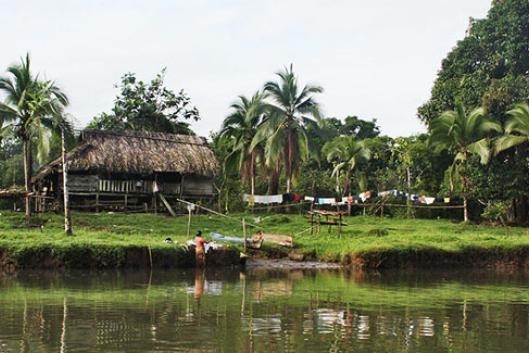The indigenous Ngäbe-Buglé people had to endure criminalization, massacre and brutal repression to avoid the onslaught on their territories. They managed to get the Panamanian government to ban mining and hydroelectric dams in their territory. However, another intense onslaught came from conservationist NGOs.
Many governments, NGOs and even corporations are planning to increase the number of Protected Areas around the world, with the goal of reducing deforestation and biodiversity loss. But experience has shown us that the prevailing conservation model that continues to be used does not consider Indigenous Peoples or other forest-dwelling communities as critical agents in the preservation and stewardship of forests. On the contrary, most Protected Areas prohibit human presence.
Despite the difficulties the Ngäbe-Buglé people are facing due to the pandemic, what follows is a transcription of some exchanges that we had with Rogelio Montezuma, head of the Committee for the Defense of the Ngäbe-Buglé Comarca [large indigenous territory protected by law]. In 2010, the Ngäbe-Buglé indigenous people carried out a strong resistance to prevent their territory from being handed over to mining and dam companies. They had to endure criminalization, massacre and brutal repression from the police, but it was a conscious struggle for the life of their community.
As a result of this strong resistance, in 2010 the government of Panama abolished the law that was going to reform the mining code, and it legislated to prohibit mining exploration and exploitation, as well as hydroelectric dams, in the Ngäbe Bugle comarca. The Barro Blanco dam could not be canceled because it was outside the limits of the comarca, even though it does impact and affect Ngäbe communities that live on the banks of the river where the dam was built.
Cerro Colorado, which was intended to be opened up to the mining industry, is considered an important biological place in Mesoamerica, and is the lung of the region.
It was during the construction process of the Barro Blanco Dam that the government of Panama—along with international conservation organizations—moved forward with the implementation of Protected Area (PA) management programs in indigenous communities within the Mesoamerican Biological Corridor on the Panamanian Atlantic (CBMAP, by its Spanish acronym). 14 priority Protected Areas are envisaged for this corridor. The Ngäbe-Buglé Comarca is part of one of three macro-regions with high biodiversity.
WRM: In your experience, what does “doing conservation” mean to the Ngäbe-Buglé people?
Rogelio: The communities by nature have always conserved forests as well as their relationship with their environment, harmoniously creating coexistence among all living beings.
WRM:
Rogelio: In order he use and benefit that a water source gives us, and the production of food for survival that does not threaten or destroy the environment.
WRM: In your experience, what were the impacts caused by the creation of the Protected Area?
Rogelio: There is a protected area that borders the Ngäbe-Buglé Comarca territory, which causes uncertainty among the people. Certain practices are restricted there, such as hunting and the use of trees, among other things. This directly creates social conflict, since there was no prior agreement about these restrictions. When they pass a resolution to create a Protected Area, that is the first time they tell people about it, and they do not leave affected communities with any options.
WRM:
Rogelio: Conservation without the true participation of the communities that live in and depend on forests causes a lot of unrest and questions. This is because many of the decisions made are arbitrary and inconclusive. To use natural resources for business is to not consider the consequences for indigenous peoples.
